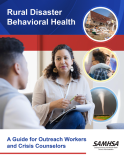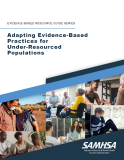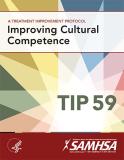
This guide provides staff with knowledge and strategies to best support diverse rural communities. It considers risk factors, strengths, and common disaster reactions unique to rural communities to support best practices for ensuring disaster resilience and recovery.
Units per Product
Download
Rural Disaster Behavioral Health: A Guide for Outreach Workers and Crisis Counselors
File Type: PDF
File Size: 8.22 MB







